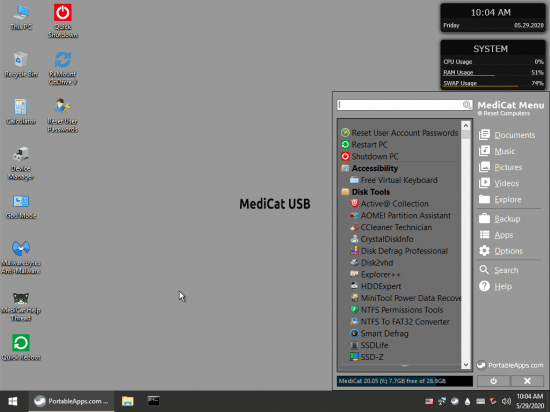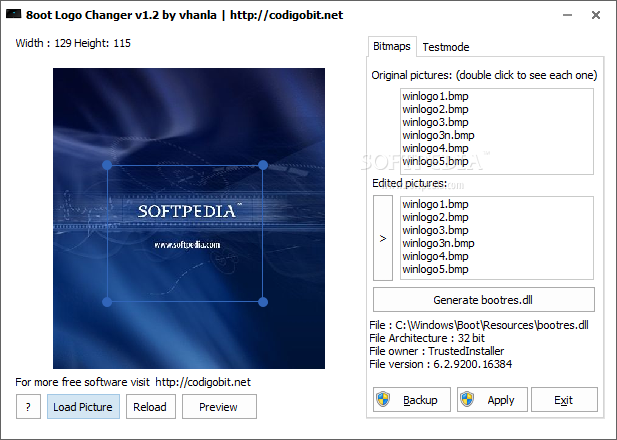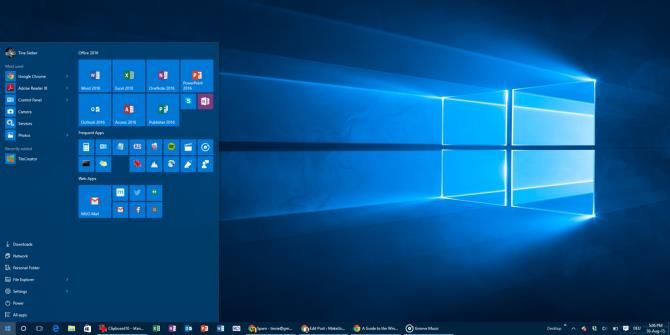Windows 10 is the latest version of windows and it is the best version yet. But just like windows 7 and windows 8, it is boring to look at and much more exciting to use. 8oot logo changer is a free tool designed to change the default boot logo picture of the windows boot screen with a custom picture. For example, use the Configuration Manager console to customize boot images based on Windows PE 10 from the Windows ADK for Windows 10. For a boot image based on Windows PE 3.1, customize it from a different computer using the version of DISM from the Windows AIK for Windows 7. Then add the custom boot image to the Configuration Manager console. UPDATE: Windows 8.1 and Windows 10 come with same boot screen as Windows 8. We all know that whenever a new public testing build of Windows 8 was released by Microsoft, it came with a new boot screen. Windows 8 Consumer Preview came with Microsoft’s favorite “Betta fish” boot screen. How to change the windows 10 boot logo from the 4 Squares to your own custom image - UEFI systems only!Download Link: Github vers.
Anytime you boot your Windows computer, the very first thing you see on your screen is the manufacturer’s logo. I don’t know about you but I’ve always wanted to change just about everything on my Windows PC ever since I got the customization flu. The boot logo though is not as easy as changing the wallpaper or even the Windows login screen. The manufacturer doesn’t want you to change the logo. Although, Windows is a pretty popular platform. When a lot of developers have something, somebody will always find a way to change the Windows 10 boot logo. That is how we have this nifty tool called HackBGRT. It lets you change the Windows UEFI boot logo.
Warning
HackBGRT is a little complicated to use. Also, you’re not using it to change wallpapers. Remember, Windows is an OS that might fail to boot when you try as much as installing an icon pack. Changing the UEFI Boot logo is something at another level. It’s our duty to let you know that if you do proceed with using this tool your PC might fail to boot. It is unlikely if you’ve followed the guide below carefully but still very possible. We recommend creating a recovery media first or at least a system restore point. You can create a Windows system restore point and use it to restore your PC.
HackBGRT also creates a backup of the bootloader for such situations. We’ll show you how to use that as well.
Requirements to Chane UEFI Boot Logo
HackBGRT only supports UEFI systems and is not meant to work on anything else. If you’ve bought your computer recently, it is more than likely to support UEFI. If you’re running a dual boot setup, you’re most probably using the Legacy bootloader, in which case you can’t use this tool. You must also make sure Secure Boot is disabled. This can be done in the BIOS menu accessing which is different, depending on the manufacturer of your PC.
Download

Steps to Change Windows 10 Boot Logo
- Download the latest HackBGRT zip from GitHub using the link above and extract the archive.
- In the extracted folder, double-click on the setup.exe file. If your system doesn’t support UEFI or you have it turned off you will be told so in the command prompt window that opens up. Similarly, you will be asked to disable Secure Boot if you have it enabled.
- Hit I on your keyboard to begin the installation. After that is complete the program will open a configuration file in a Notepad.
- In this configuration file, you’ll be required to specify the path to the image file you want to use, the positioning of the image on the screen, etc.
- When you’re done with it, save the configuration file and close it. The default boot logo will then be opened in an MS Paint window. You can edit the image or copy from another source, then save the image in 24-bit BMP format.
- Once the image is saved, the program will make the necessary changes and your boot logo will be applied. You can see the changes when you reboot your system.

How to revert changes
Did something not go as planned? Launch the setup.exe file again and hit D instead of I this time in the command prompt window. There is also the possibility that you might not be able to boot into your system. This is quite unlikely, but we did warn you before. If you did create a recovery media or already had one, you can use that. Or you can use a Windows system restore point that you may have created.
Since you aren’t able to boot into the system, you may still need a bootable Windows media, such as a disc or a USB drive. You can also use the backup created by the HackBGRT tool by copying [EFI System Partition]EFIHackBGRTbootmgfw-original.efi into [EFI System Partition]EFIMicrosoftBootbootmgfw.efi. To do that you will need to use the command prompt from a Windows media or use an Ubuntu Flash drive, etc.
Having applied a custom boot logo on your PC, you might also want to install a custom theme on your Windows 10.
Windows 10 Boot Logo Changer Software Free
Summary :
Are you bored with the default Windows 10 boot logo? Do you want to change Windows 10 boot screen for further UI customization? In this post, MiniTool Partition Wizard shows you how to do that step by step.
Quick Navigation :
Requirements for Changing Windows 10 Boot Screen
When you boot up a Windows 10 PC, it will show the default Windows 10 boot screen like the following picture:
Do you know you can change Windows 10 boot screen as your will. You don't need to watch the same screen again and again.
The Windows 10 boot screen is composed of three parts: the Boot Logo (the Windows logo), the Boot Status Indicator (the circle), and the Boot Status Message. The boot status message occurs only when your PC run into problems. And its location is right under the circle.
You can suppress these Windows elements via the Windows Unbranded Boot feature (this feature requires Windows 10 Enterprise, Windows 10 Professional, or Windows 10 Education). After suppressing these elements, you will get a totally black boot screen.
Many people may don't like this method. They just want to replace the startup logo with a custom logo. In this case, you should use another tool to modify the Boot Graphics Resource Table (BGRT).
Please note that you can modify the BGRT only on devices that use UEFI as the firmware interface. If your PC uses the BIOS firmware, you can't modify the BGRT.
Windows 10 Boot Logo Download
What are UEFI and BIOS? This article will tell you their differences via UEFI vs BIOS and show you how to convert MBR to GPT to support UEFI mode.

Windows 10 Boot Logo Editor
How to Change Windows 10 Boot Screen
To change Windows 10 boot logo, you can refer to the following steps:
- Back up important data in advance lest anything goes wrong and your data is lost.
- Boot into UEFI firmware to disable the Secure Boot
- Make an image no bigger than 300px x 300px. This image will be set as the boot logo later. Please note that this image should not be GIF or transparent. If you want to add a transparent logo, you should change the background color of your transparent image to black in advance.
- Download a third-party free and open-source tool called HackBGRT from GitHub platform, since Windows doesn't offer options to change Windows boot logo.
- Extract the folder and then run the 'exe' program as an administrator. This will launch the application’s command-line tool.
- Press the 'i' key on your keyboard and this will open the the program’s config file in the Notepad.
- Close the Notepad by clicking on the “X” icon on the top-right corner. Then, the HackBGRT will open the Paint application with its own default boot logo.
- Click on the “Paste” drop-down button and select the “Paste from” option.
- Select the 'File > Save' option to save the file.
Through the above steps, you have replaced the Windows 10 boot logo and then you can close the software.

If you want to change Windows 10 boot screen back to the original one later, you can refer to the following steps:
Windows 10 Custom Boot Logo
- Open the HackBGRT folder, right-click on the “exe” file and select the “Run as administrator” option.
- Press 'R' key to completely remove HackBGRT and restore the original boot logo, or press 'D' key to just disable this software and restore the original boot logo.
- Reboot the system and you will see the original Windows boot logo.